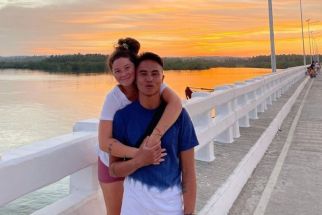Samar: It’s about time
June 2, 2003 | 12:00am
 While waiting for my flight (to Manila) at the Daniel Romualdez Airport in Tacloban, someone from the DENR handed me a brochure on the Samar Island Biodiversity Project. I went through it courteously and tucked it safely in one of the pages of Marquez’s 100 Years of Solitude that was on my third re-reading. Like Woodward and Maya Angelou, Gabriel Garcia. Marquez is a constant travel companion anywhere I go. His stories, like the poetry of Maya Angelou and the brilliant practical political insights of Woodward, allow me to experience excitement and joy at their most sublime.
While waiting for my flight (to Manila) at the Daniel Romualdez Airport in Tacloban, someone from the DENR handed me a brochure on the Samar Island Biodiversity Project. I went through it courteously and tucked it safely in one of the pages of Marquez’s 100 Years of Solitude that was on my third re-reading. Like Woodward and Maya Angelou, Gabriel Garcia. Marquez is a constant travel companion anywhere I go. His stories, like the poetry of Maya Angelou and the brilliant practical political insights of Woodward, allow me to experience excitement and joy at their most sublime.
I was born a Waray and a Noranian (a rabid Nora Aunor fan). I am fiercely proud of my small town of Borongan, the capital of the Eastern part of the island – where the nastiest storms enter the archipelago. When you come from my place, no storm is big enough to wash away your dreams. This is the reason why we have a better appreciation of bright mornings and starry nights after having lived through abusive tropical depressions. I am proud to be Waray and proud to be poor. Because of who I am and who I am not, I borrowed from the universe a lot of grace and tenacity to dream on. There was no other way even if it was the harder path.
To this day, Borongan or the Eastern part of Samar has no airport. Although there is an unfinished one in Borongan, stories have it that it is substandard. After testing the runway, experts found it unsafe and horribly constructed. Authorities should look into this. Borongan is a town waiting to progress. An airport would certainly create business opportunities for the province. What happened to this airport? Who is responsible for this malfeasance? Who is accountable? These are but few unanswered questions about this airport. To this day, we go to Tacloban to take our flight to Cebu or Manila.
Thank God, today the roads are better! I said thank God because this is long overdue, and politicians have nothing to do with this. This is God’s kindness. The island has been deprived of good roads for generations while it has been blessed with some of the most corrupt politicians.
The Warays have endured courageously both the wrath of killer storms and the greed of imbecile politicians. (You can count in one hand outstanding politicians in this island). We’re hoping that one day the Waray’s much-vaunted tapang will be put to good use in choosing its leaders. Lord, bless us!
Anyway, back to the brochure. Here’s a summary of the things that makes Samar a national treasure:
1. Diverse habitats, mostly forests, forests over limestone, forests over ultra basic rocks, lowlands evergreen rainforests, mangrove forests, caves and rivers.
2. One of the 18 Centers of Plant Biodiversity in the country. A total of 2,400 species of flowering plants including 406 endemic species, 40 species of which are found only in the island.
3. One of nine Endemic Birds Areas in the Philippines (according to Birdlife International). 197 bird species have been recorded, including 50 endemics.
4. Thirty-nine species of mammals, 25 reptiles and 12 amphibians recorded in the island.
5. One of the 200 eco-regions in the world considered vital in preserving the Earth’s biodiversity (according to the World Wildlife Fund).
The island of Samar is the third largest island in the Philippines with an area of 1.34 million hectares. It has the largest unfragmented area of lowland rainforests, 360,000 hectares. This includes 120,000 hectares of primary forests.
In 1989, Samareños campaigned to stop commercial logging in the island. The DENR officially declared a ban on all commercial logging operations in the same year.
In 1996, President Fidel V. Ramos declared the remaining forests as the Samar Island Forest Reserve (SIFR) in response to the clamor of Samareños to preserve the remaining forests.
Still, according to the Samar Island Biodiversity Project brochure, Samar Island belongs to one of the poorest regions in the Philippines. Of the 72 municipalities in the island, 44 are classified as fifth class and 10 belong to sixth class municipalities. Poverty incidence ranges from more than 30 percent in Northern Samar to more than 40 percent in Eastern and Samar Provinces.
As of May 2000, 187,044 people reside in about 400 upland barangays. About 90 percent are dependent on forest and other natural resources for livelihood. Many of these upland barangays are inaccessible to four-wheel vehicles and have very few social services.
Because of rapid and reckless commercial logging in the 1960’s to ’80s, only 26 percent of Samar’s forest cover remains. The threats to habitat degradation and biodiversity loss continue due to encroachment, unsustainable farming practices, rampant small-scale logging, unregulated harvesting of non-timber forest products, hunting and collection of wild life, unregulated quarrying, poorly planned infrastructure projects and mining.
Mabuhay ang Samar! Samar is more than just the Balangiga Massacre, the only battle Filipino revolutionaries won in the war against the Americans.
It is also about the deprivation and abuse this island has endured for long decades now. It deserves more attention from the National Government, which makes us feel at times that we are not part of this country.
Samar is also about beauty and progress but it must be given its fair share at a chance to shine. It’s about time, really... before another massacre erupts.
BrandSpace Articles
<
>
- Latest
- Trending
Trending
Latest
Trending
Latest
Recommended





























 Exclusive
Exclusive



